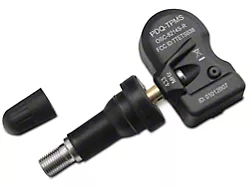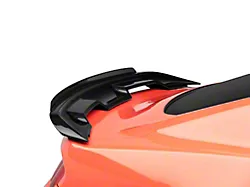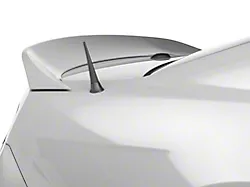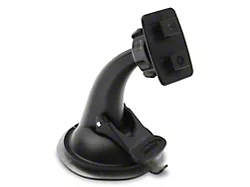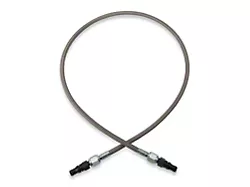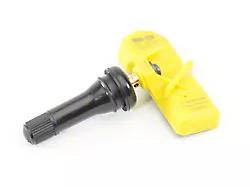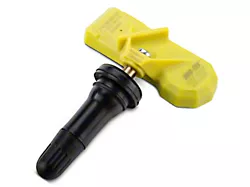
Best Sellers
How to Install C&L Racer Cold Air Intake w/ 95mm MAF on your Mustang
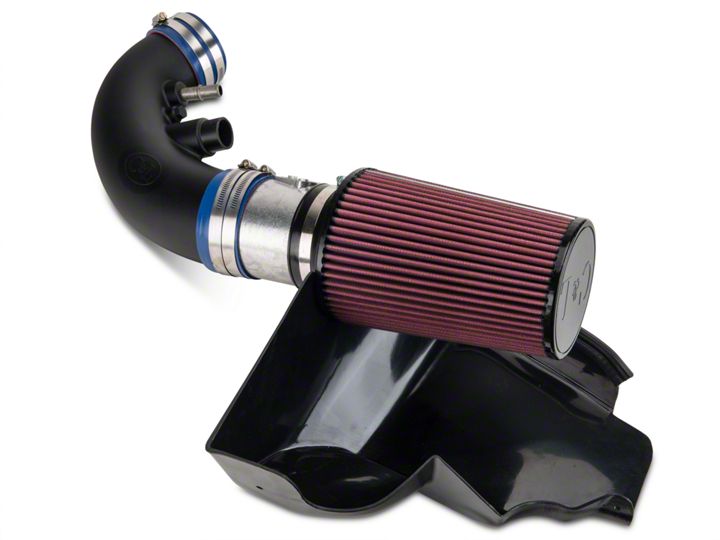
Shop Parts in this Guide
Before installing this product, read these instructions carefully.
Note: Due to the nature of the computer processor, a computer re-tune is necessary when installing this air intake assembly. We offer an optional 50 state legal “no-tune” calibration insert for this system which does not require a tune. Purchase your tune from a reputable company that is familiar with the tuning requirements for this air intake upgrade preferably dyno tuned in person by a knowledgeable tuner using a wide-band air/fuel ratio monitor. A “mail order” program is not recommended, unless the tuner is familiar with the tuning adjustments for our specific system. DO NOT use a generic “cold air intake” tune with our system and DO NOT use a tune that was developed for a competing air intake sold by another manufacturer. If you install this system prior to having the computer re-tuned, do not run the vehicle under a heavy load or at wide-open throttle until the computer adjustments have been made.
Installing a “Cat-Back” exhaust will not require any adjustments, but the installation of an “off road” or high-flow catalytic “X” or “H” pipe may require you to turn certain OBD functions off for proper engine performance. The use of a dyno equipped with a wide-band air/fuel ratio monitor is vital to monitor your air/fuel ratio, and you should try to maintain your wide open throttle air/fuel ratio of around 12.4:1 in the upper RPMs.
Tools needed for installation: a flat blade screwdriver, socket wrench with extension, 8mm socket, 10mm socket, 13mm deep well socket, channel locks and a socket driver for the supplied T-20 torx bit.
**IMPORTANT NOTE: DO NOT USE THE SELF-TAPPING SCREWS IN OUR MAF HOUSING. We have provided new MAF sensor screws to replace the factory self-tapping screws, so be sure to use them. If you use the factory screws, you will almost certainly damage your new mass airflow housing, and we can not be held responsible.
When installed properly, the mass airflow housing and silicone inlet pipe coupler will pass evenly across the round cut-out on the filter shroud. For pictures of how the system should look like installed, please refer to our website at: www.cnlperformance.com.
1. To remove the stock assembly, remove the engine cover, which is blocking access to the throttle body. The engine cover is located in place over four rubber mounts where the cover “snaps down” over them. If your vehicle is equipped with the optional strut tower brace, you will need to remove the four 13mm nuts that are holding it down on to the strut tower. You will need to use a deep well socket to reach these nuts, and once they have been removed, lift the strut brace straight up off the strut tower and set aside the brace with the original nuts for re-assembly. The engine cover is easily removed by lifting straight up on it by starting with one end (until it releases from the mount) and then moving back to the other end. Set the cover aside for future re-installation.
2. Loosen the clamp that secures the stock inlet hose to the throttle body. Next, you will notice a large diameter vacuum hose that runs from the valve cover to the stock inlet pipe, just to the right of the throttle body. Reach for the fitting that attaches this hose to the inlet pipe. There is a little tab that is holding the fitting in place over the boss on the inlet pipe. Move this tab over with your thumb and then pull the connector away from the inlet pipe towards the driver’s compartment. If you have an automatic equipped vehicle, there will be a smaller fitting next to the valve cover vent tube. You will remove it from the stock inlet tube by pushing down on the yellow tab with your thumb while pulling the fitting away from the pipe, towards the driver’s compartment as well. To the right of these fittings is the noise transmission tube connector. Using some large channel locks or a vice grips, squeeze the two tabs of the spring loaded clamp together. It should lock itself in the “open” position, allowing you to remove the round rubber connector from the boss that it attaches to on the inlet pipe. Move it away from the inlet assembly and disconnect the flexible tubing section from the factory air box by separating the rubber “clamp” that wraps over the tube. It will separate by pulling it apart, and it will stay on the factory air box lid undamaged. To give you freedom of movement with the noise transmission tube, pull it away from the mount on the driver’s side strut tower, where it is held on by a rubber triangular shaped mount.
3. Next, disconnect the MAF sensor located on the front of the air filter housing which has a wiring connector plugged into it. To disconnect, slide the red tab on the bottom of the connector towards the front of the vehicle. This will unlock the connector. Slide the connector off the MAF sensor by squeezing the tab on the underside of the connector and pulling it towards the front of the vehicle. Go to the end of the stock air filter assembly, and you will see a 10mm bolt located between the driver’s side fender and the air box. Loosen and remove this bolt and set it aside for future use. You must now separate the mass airflow wiring harness from the factory air filter box assembly. There is a combination of both small tabs and “press through” nylon inserts that attach the harness to the air filter box. Pull them away from the factory box assembly, so that the harness is no longer attached. The entire air inlet assembly can be taken out of the engine compartment. After removing the rubber inlet hose from the throttle body, move the air box assembly slightly upward and mostly towards the rear of the vehicle. This will release the rubber feet that isolate it from the body and slide the lower half of the air box from the incoming fresh air feed that enters in from between the headlight assembly and radiator support. The entire assembly will come out by lifting it up and out of the engine compartment.
4. Using the supplied T-20 torx bit, remove the two screws that secure the factory air meter-sensing element to the stock air box assembly. Carefully slide the sensor straight out of the housing, and the entire sensor cartridge will come out. Using the supplied screws, carefully lower the sensor into the new larger aluminum MAF housing provided in this kit. The sensor will only bolt up in one direction, with the “flow” arrow pointing towards the engine (inlet pipe) end of the unit, away from the flanged filter end. Under the stock sensor, there is a rectangular shaped rubber seal that should come out with the sensor cartridge. Make sure that it transfers to the new housing and forms a positive seal. If not pre-assembled, attach the mass airflow housing to the round end of the inlet tube using the supplied 4” silicone hose and stainless steel hose clamps. To ensure proper orientation, the sensor should be point towards you (and the front of the vehicle) and the C&L logo will be pointing “down”. At this point, the silicone hose should completely cover the small end of the MAF body. Make sure that the hose on the inlet pipe has been pushed down far enough, so that the MAF body presses solidly up against the inlet tube and there is no gap between them. Failure to do so will lengthen the overall assembly, and may effect air filter location and fitment. Another undesired side effect of not installing the silicone hose far enough over the inlet tube is the potential to deform the tube if enough clamping force is placed near the very outside edge of the tube itself.
5. Take the supplied filter shroud and lower it into the engine compartment, with the lower “scoop” portion of the shroud going down first, behind and under the rubber seal of the “fresh air” intake feed. Move the shield as far forward as you can under the fresh air feed, and then locate the bolt hole of the filter shroud with the original 10mm bolt hole that held the factory air filter box in place. Re-use the factory 10mm bolt to fasten the shield in place. An optional mounting point to attach the factory fresh air feed to the new filter shroud has been supplied. To use this additional mounting support, you must drill a small diameter hole in the bottom of the rubber section of the fresh air feed in a location that corresponds with the hole in the filter shroud and use the supplied hardware to join the bottom of the filter shroud assembly to the lower section of the fresh air feed. If you choose to not use this optional mounting location, simply remove the hardware supplied and set aside. The hole will not be visible, as it will be under the bottom of the factory “fresh air” feed tube.
6. There are two different fittings provided with the air intake assembly. Manual transmission vehicles will insert and tighten the supplied nylon plug to cover the threaded hole in the inlet tube. Automatic equipped vehicles will use the barbed nipple fitting to thread into the tapped hole. Using a wrench to install the correct fitting, you will notice that it gets tighter as the fitting goes further into the boss. This is because it is a tapered pipe fitting and will deliver a proper seal without the need for using any type of sealant. You may stop threading the fitting into the boss once the bottom of the wrenched fitting reaches the top of the boss in the inlet tube.
7. To install the inlet assembly, lower it into the engine compartment and slide the silicone hose over the throttle body and tighten the hose clamp that goes over the throttle body flange while leaving the clamp that goes over the inlet tube slightly “loose”. You may now adjust the location of the inlet tube and MAF assembly in the engine compartment for proper fitment. If the air meter housing is properly located through the opening in the filter shroud, the larger (base) portion of air filter will be just aft of the ABS lines. One ABS line in particular will be very close to, or just barely touching, the lower front potion of the filter. For additional clearance, you can pull this line forward slightly (towards the front of the vehicle), as the line will bend with little effort to provide additional clearance. Slide the supplied filter over the neck of the new MAF body. You will need to orient the clamp so that you can tighten it with a screwdriver or socket wrench. Re-insert the factory round “noise transmission” tube over the receptacle boss in the middle of the back side of our new inlet pipe assembly. With the hose slid all the way over (until it stops), release the spring clamp to ensure a proper seal and function. Re-connect the valve cover vent tube fitting on to the new inlet tube, making sure that the locking tab holds the fitting in place. If you have an automatic equipped vehicle, you will need to re-use the original molded rubber hose that attached to the factory inlet tube. To do this, you must pull back the plastic conduit and cut the hose just aft of the factory nylon release fitting. The exposed 3/8” rubber tubing will then slide directly over the barbed nipple fitting that you had previously installed into the new inlet pipe assembly. Once you are satisfied with the fitment for the entire assembly, tighten all hose clamps in the system. Re-install the factory engine cover directly over the rubber mounts, and if you previously removed the strut tower brace, re-install it back onto the vehicle using the original 13mm nuts. Before re-connecting the triangular shaped rubber mount to the driver’s side strut tower, remove the rubber clamp that attaches it to the noise transmission tube and re-install it a couple of inches further forward on the flexible noise tube. This will take up any slack that may be present in the noise transmission tube towards the front of the engine compartment.
8. Re-check all connections to ensure proper installation and re-program the computer processor. Make sure that the adjustments in your computer tune are appropriate for our “tune required” system. It takes an average of 13% more airflow traveling through the mass airflow section of our system to achieve the same output signal as the stock intake assembly. By raising the airflow values in the factory MAF transfer function table by 13% at all airflow data points, you will ensure that the necessary adjustment has been made to keep the computer operating within normal parameters, and with a proper air/fuel ratio under all operating conditions. As of the writing of these instructions, changing the airflow values in the MAF table does NOT make an appropriate change in the SCT supplied tuning software, and the Diablosport software is still in development. If using SCT software, as of the writing of these instructions, you must raise the “Frequency” values in the MAF table by 18% to get a proper calibration adjustment.
